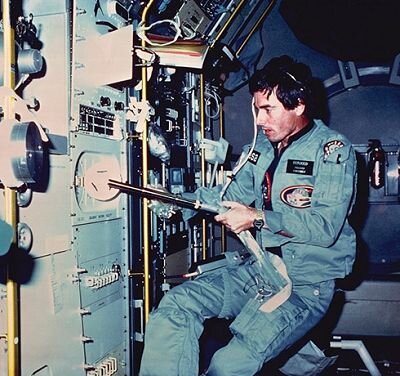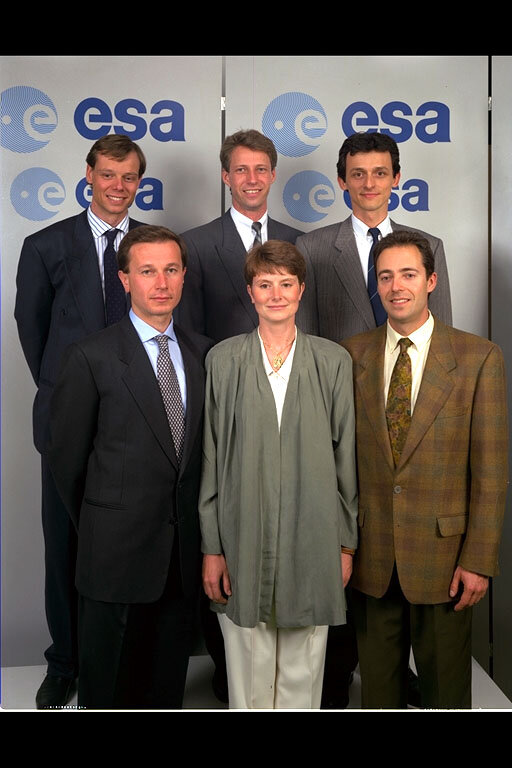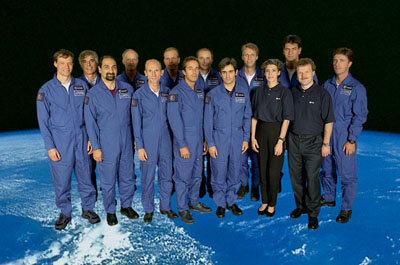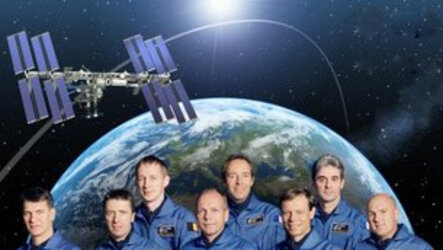A history of European astronaut selection
Human spaceflight became a reality on 12 April 1961 when Russian cosmonaut Yuri Gagarin was launched in the Vostok 1 spacecraft from the Baikonur Cosmodrome. This was followed 23 days later by the launch of Alan Shepard as the first American in space in a Mercury spacecraft from Cape Canaveral (close to the Kennedy Space Center where the Space Shuttle is launched).
It was 17 years later in 1978 that European human spaceflight history began, when Vladimir Remek from the Czech Republic (then Czechoslovakia) was launched on Soyuz 28 to the Salyut 6 space station. He became became the first cosmonaut from a country other than the Soviet Union and the United States, is considered to be the first European astronaut.
European astronauts have helped to shape the face of some of the most important human spaceflight missions in the past and will continue to shape the face of human spaceflight in the future.
First ESA astronauts

ESA started its first astronaut selection in 1977. This came from the 1973 agreement that ESA had with NASA to supply the first Spacelab reusable science laboratory, which was carried in the Shuttle’s cargo bay, in exchange for flight opportunities for European astronauts.
From this selection campaign ESA chose its first astronauts: Franco Malerba of Italy, Claude Nicollier from Switzerland, Wubbo Ockels from the Netherlands and Ulf Merbold from Germany (Malerba later resigned from ESA but he eventually became the first Italian in space when he flew on the Space Shuttle in 1992).
It was Merbold who had the honour of being the first ESA astronaut to undertake a mission on the Space Shuttle (STS-9) on the 10-day Spacelab-1 mission between 28 November 1983 and 8 December 1983. Not only was this the first spaceflight of an ESA astronaut, it was the first flight of the European-built Spacelab and the first flight of a non-American on the Shuttle.
During the 1980s, while ESA astronauts were undertaking Shuttle/Spacelab missions, several other European countries and Member States of ESA also started a recruitment of astronauts on a national basis. Many of those nationally selected and recruited astronauts flew on Russian Soyuz missions to the Mir space station or on US Space Shuttle missions as Payload Specialists. A peak was reached in 1991, when 19 European astronauts were active as members of several national astronaut groups including two in the ESA astronaut corps.
Foundation of EAC

In 1990, ESA saw the need to increase the size of its astronaut corps and founded the European Astronaut Centre in Cologne. This was in response to many ongoing projects and studies that would eventually be realigned into Europe’s contribution to the International Space Station including the Columbus laboratory, which was launched and attached to the ISS in February 2008.
In 1991-92, a new astronaut selection was performed. There was a first national selection under the responsibility of each ESA Member State, with each country having the opportunity to present up to five candidates to ESA for a final selection.
In their national selections, ESA Member States received more than 22 000 applications, out of which nearly 5500 met initial criteria to be taken into consideration. By a national psychological, medical and professional screening process, they identified 59 candidates to be proposed for the second step, the final ESA selection.

Some of the Member States such as Germany, France, Austria and the United Kingdom had proposed candidates retained from their national selections in the 1980s, and some other Member States decided for a new national pre-selection campaign applying the newly established ESA criteria.
From this final group, ESA selected, and finally recruited an additional six astronauts. Four of them started basic training at EAC to be later trained for Russian Soyuz flights to the Russian Mir space station, and two were sent to NASA to start Shuttle Mission Specialist training, being incorporated into the NASA astronaut corps.
In the following six years, Europe would achieve many milestones in human spaceflight. In 1992, Ulf Merbold became the first ESA astronaut to undertake a second space mission (Spacelab IML-1, STS-42) and Claude Nicollier became the first European astronaut to serve as a Mission Specialist on the Space Shuttle, taking over more operational responsibilities than the Payload Specialist role had before.
Merbold also became the first ESA astronaut to fly on a Russian Soyuz spacecraft, on the one-month EuroMir '94 mission (3 October – 4 November 1994). The following year saw Thomas Reiter start the first European long-duration mission (six months) as part of the EuroMir '95 mission and he was the first ESA astronaut to perform a spacewalk, making two EVAs using the Russian spacesuit.
A single Astronaut Corps

In 1998, the year that saw the first two elements of the International Space Station launched, ESA Member States decided to join the forces of the national astronaut teams and to reinforce the European identity through a single European Astronaut Corps. This process concluded with French astronaut Philip Perrin joining the corps in 2002, bringing it to a total of 16 astronauts. Of these astronauts, many have undertaken important missions including ISS assembly missions.
In the past ten years some of the European human spaceflight highlights of these missions include:
- Servicing of the Hubble Space Telescope on the STS-103 mission in 1999 with ESA astronauts Claude Nicollier and Jean-François Clervoy. On this mission Nicollier undertook the first EVA with a US spacesuit by an ESA astronaut
- Thomas Reiter becoming the first ESA astronaut to become a member of an ISS increment crew as part of the European Astrolab mission (4 July – 22 December 2006)
- Christer Fuglesang carrying out the first EVA by an ESA astronaut for ISS assembly during the Celsius mission (STS-116) in December 2006
- The delivery of the first European-built ISS module (Node 2) to the ISS with ESA astronaut Paolo Nespoli on the Esperia mission and as part of the STS-120 crew in October 2007
- Delivery of the European Columbus laboratory by the STS-122 crew with ESA astronauts Léopold Eyharts and Hans Schlegel. Eyharts also became a member of the ISS increment crew.
2008: New selection campaign

With the number of astronauts in the European Astronaut Corps now down to eight astronauts due to astronauts taking up other duties or retiring, a new selection for astronauts was announced in 2008 in order to fulfil ESA’s goals and aims for the future.
This is the first time a selection has been performed by ESA all over Europe on a web based application procedure without any national pre-selection. Several thousand applications have been received.
After a thorough psychological, medical and professional screening, 40 to 50 excellent candidates are expected to proceed, out of which 4 candidates will be finally recruited. They will be recruited mid-2009 and perform Basic, Advanced and Mission Training before they are ready for a space mission to the International Space Station from 2013 on. Furthermore with the prospect of future human exploration missions to the Moon and Mars, a next astronaut selection campaign may be intended for 2014.








